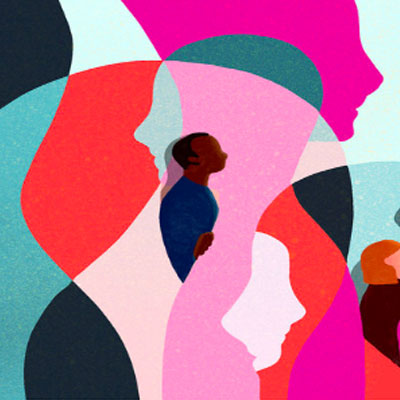Best Practices to improve Diversity and Inclusion in Hiring | Aparna Sharma | Senior HR Professional & Certified Corporate Director I Editor’s Collection
 Whilst Diversity and Inclusion (D&I) has developed into a discrete HR discipline, they should not be managed as a standalone agenda. To make sustainable progress towards becoming a diverse and inclusive organisation, D&I needs to be integrated into every core people process. One of the core processes is Talent Acquisition. If candidate pools and resulting hires are not sufficiently diverse, then the talent management activities which follow will not grow sufficiently diverse leaders for the future. Also, if an organisation’s culture is not inclusive to everyone, this will limit its ability to retain diverse talent.
Whilst Diversity and Inclusion (D&I) has developed into a discrete HR discipline, they should not be managed as a standalone agenda. To make sustainable progress towards becoming a diverse and inclusive organisation, D&I needs to be integrated into every core people process. One of the core processes is Talent Acquisition. If candidate pools and resulting hires are not sufficiently diverse, then the talent management activities which follow will not grow sufficiently diverse leaders for the future. Also, if an organisation’s culture is not inclusive to everyone, this will limit its ability to retain diverse talent.
Considerations when making decisions about people –
1. We tend to hire and promote ‘in our own image’ – selecting, developing and
sponsoring people who are like us, have similar backgrounds, or who have attributes similar to our own which we tend to value over others. This is a type of unconscious bias known as affinity bias.
2. ‘Merit’ is not an objective or gender-neutral concept: it is influenced by affinity bias i.e. our idea of a successful person may reflect our own strengths; conversely, we may find it harder to see merit in people who are different to ourselves.
3. Sometimes, the criteria for more senior roles are subtly skewed in favour of the
dominant ‘in-group’; biased criteria (such as performance standard and behavioural indicators) can become embedded in frameworks such as leadership capability models.
4. The type and background of the person previously in a role, as well as the
composition of the broader team, often influences who is regarded as most suitable to fill a vacancy.
5. Someone who behaves in a way that is inconsistent with commonly-held stereotypes and the associated exceptions may be viewed negatively in hiring and other processes.
6. People wishing to work flexibly may often be viewed less favourably in a range of situations – including recruitment – due to a common negative bias against flexible workers, particularly part-time employees, the majority of whom are usually women.
7. The more discretion that decision-makers such as hiring managers have, the greater the potential for individual bias to influence their decisions.
8. The new hire’s on-boarding experience can significantly impact their longer-term retention; a new hire’s early perception of being included or excluded – wholly or partially – makes a difference.
Five Proven Practices :
1. Educate your team –
The first step in creating a more inclusive recruitment program is to educate your team on what these biases might look like.
A lot of the bias we talk about as recruiters might come down to things like gender, race, or religion. While it’s important to be aware of these kinds of bias, there are many other different forms of bias that may prevent a hiring team from connecting with the right candidates.
For example, a recruiter may experience confirmation bias if they’re quick to make a judgment before getting to know a candidate. To confirm their original assumptions were correct, they’ll look for any responses or behaviors that reinforce their initial opinion––even if it means overlooking some great skills or characteristics that would make the candidate a great match for the job.
Diversity and education training should be an ongoing process, not something you complete once to check a box. Create a recurring education program that helps your teams identify and eliminate unconscious bias.
2. Widen your candidate search-
If you find that your candidate pool is comprised of individuals with similar education, backgrounds, and experience levels, your search may be too narrow. After all, similar people tend to use the same channels to apply to jobs.
While it’s good to know how to connect with the individuals you want to apply to your open positions, sometimes you can restrict your candidate pool too much. In order to open it back up and get some more diverse applicants, get creative about where you advertise your openings.
Let’s say you’re hiring a group of entry-level employees. In the past, you’ve always connected with prospects at college and university job fairs. While you’ve hired some great candidates in the past, they all fall within the same box.
You can expand your candidate search by looking for candidates at different schools. Connect with students at universities in different areas, or those who come from different backgrounds and education levels.
Another way to expand your candidate search is to post on different job boards or to use social media to try and attract talent. By switching up the way you’ve always done things, you can connect with applicants who may have overlooked your open job position in the past.
3. Choose the right supportive tools-
It can be incredibly difficult for humans to completely eliminate bias, particularly if it is subconscious. This is where having the right supportive tools, including AI recruitment tools, can come into play.
An AI recruitment tool can look at your candidates objectively to help determine which individual is right for your open position. However, AI is not automatically free from bias. In fact, one major e-commerce company had to scrap their AI recruitment tool because it was showing bias towards women.
One way to ensure your AI recruitment tool encourages diverse workplaces is through providing custom options. When your team is able to adjust the tool to fit your unique and specific needs, you can build a job application process that encourages inclusivity and diversity.
You also want to be sure your tool is checked regularly for human bias. Although AI does power the tool, human error can still influence the way AI ‘thinks’. Consistent check-ups can identify and remove any bias before it impacts your recruitment process.
4. Build a diverse talent pool-
When you’re hiring for an open position, you likely have a set of qualifications you’ll want to see in each applicant. While having some guidelines can be helpful, if you’re sticking to them too strictly, you may actually be hurting your chances of finding a great hire.
For example, let’s say you’re looking for five years of relevant experience for an open position. Each candidate that has less than five years of experience is automatically removed from your talent pool. While this ensures you hire an individual with the pre-determined level of experience you were looking for, it also cuts out candidates who may be just what you’re looking for with only three or four years of experience.
Building a diverse talent pool allows you to see different perspectives, as well as recognize that experience can come outside of the workforce. Diverse qualifications can also add something new and exciting to your team, encouraging everyone in the department to think differently.
When building your talent pool, take a look at who you’re connecting with and what kinds of individuals are missing. If you see that a particular group is not applying to your open positions, you’ll want to develop a strategy for connecting. Discover where they’re looking for jobs, what kinds of jobs they might be interested in, and what you can provide that might encourage them to apply.
Keeping a diverse talent pool on file can also making hiring easier. If someone isn’t the right fit for a particular job but still fits within your company’s needs and culture, keeping their information handy for a relevant open position can make your job easier in the future.
5. Involve diverse people in the hiring process-
In order to create a diverse workplace, it needs to be run by diverse people. When you have a number of different individuals following along in the hiring process, you can get feedback, perspectives, and opinions from people with different needs and expectations.
The hiring process should be collaborative––including those beyond just your recruitment and hiring team. Reaching out to other departments, team members, and company leaders can remove bias by taking different perspectives into account. When hiring feels like a group decision, you’re more likely to get an individual who doesn’t fit a particular mold.
However, a diverse group of people should be involved in every step of the way, not just when you’re ready to extend an offer. You’ll at least want a second set of eyeballs on resumes and sitting in on interviews to get another opinion on each candidate.
A diverse work team can also encourage more diversity. When candidates go through the interview process and engage with many different kinds of people, it can be encouraging for them to come work at your organization.
Look for ways to bring diverse team members into your hiring process. Ask for opinions and feedback from many different individuals and use their unique experiences to create an inclusive environment for new people. Continuously reconnect with team members to further refine your process and bring new individuals into the hiring process.
It’s not just about Gender –
 Whilst increased gender diversity is often a key priority for organisations, the best practice principles apply to all types of diversity – it’s about recruiting ‘with a wide-angle lens’. This can only be done effectively if individual hiring managers are aware of their hidden personal biases, and their decisions are made in an environment where the impact of unconscious bias is understood, recognised and challenged in a constructive and timely way.
Whilst increased gender diversity is often a key priority for organisations, the best practice principles apply to all types of diversity – it’s about recruiting ‘with a wide-angle lens’. This can only be done effectively if individual hiring managers are aware of their hidden personal biases, and their decisions are made in an environment where the impact of unconscious bias is understood, recognised and challenged in a constructive and timely way.
Stakeholder Capabilities may need enhancing –
To underpin process improvement, there is often a need to build the capabilities of
stakeholders, i.e. the managers and leaders who interpret policies and apply or support processes – particularly the decision-makers within them and process ‘owners’. This involves enhancing stakeholders’ knowledge and skill in relation to D&I, and influencing their attitudes.



I love reading an article that will make people think. Also, thanks for allowing me to comment!
It is great article. Keep posting these type of article. This is very informative and helpful information post. thank you for sharing wonderful article it helps a lot.
Candidate experience is on everyone’s mind, but the discussion is rare when companies actually ask candidates what they want and attempt to provide it. Read more as Ben Eubanks explains this in depth https://www.peoplehum.com/blog/the-need-for-shift-in-candidate-experience-talk-with-ben-eubanks